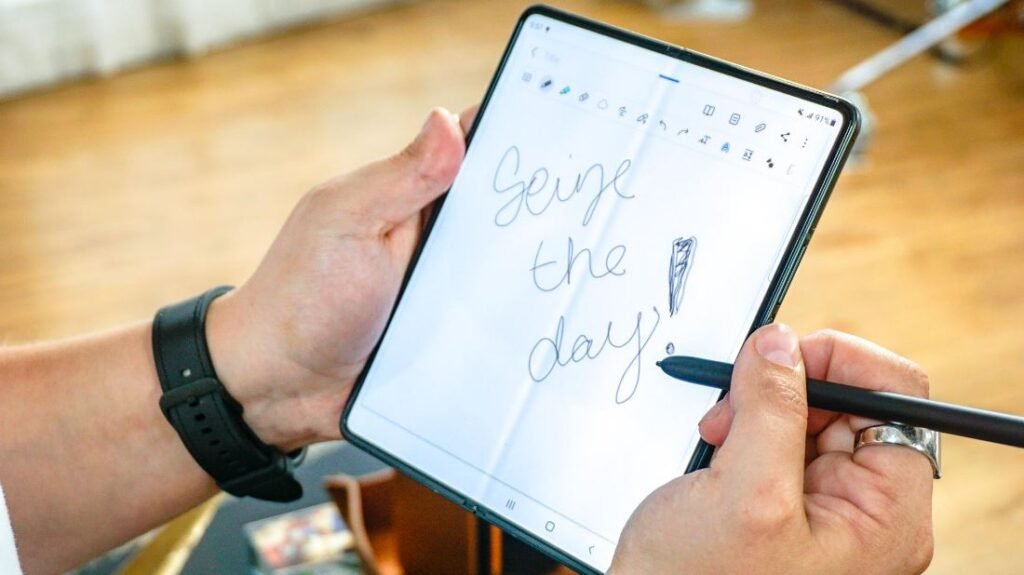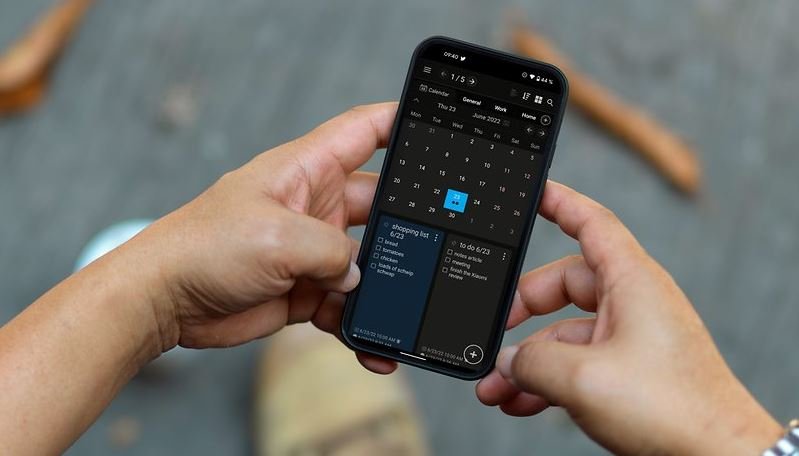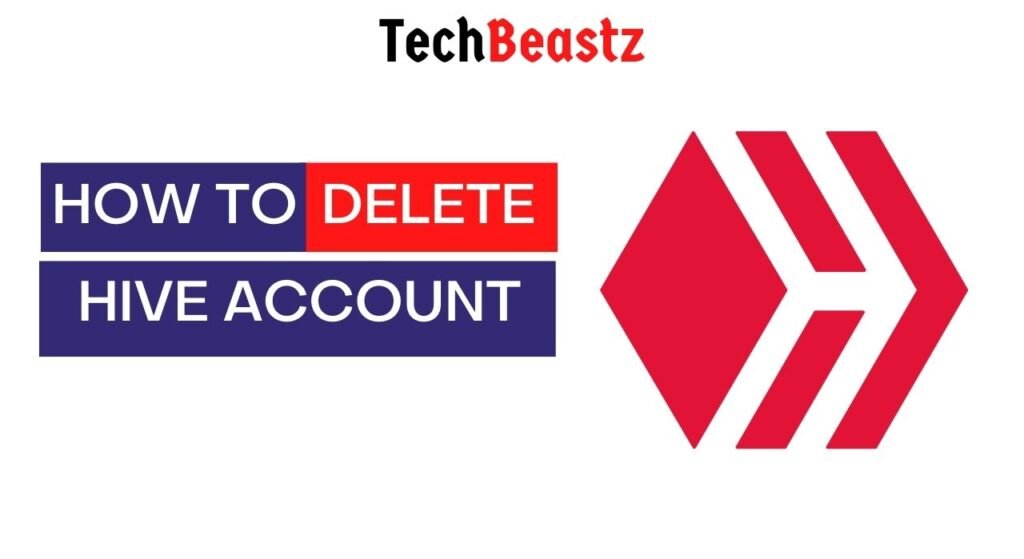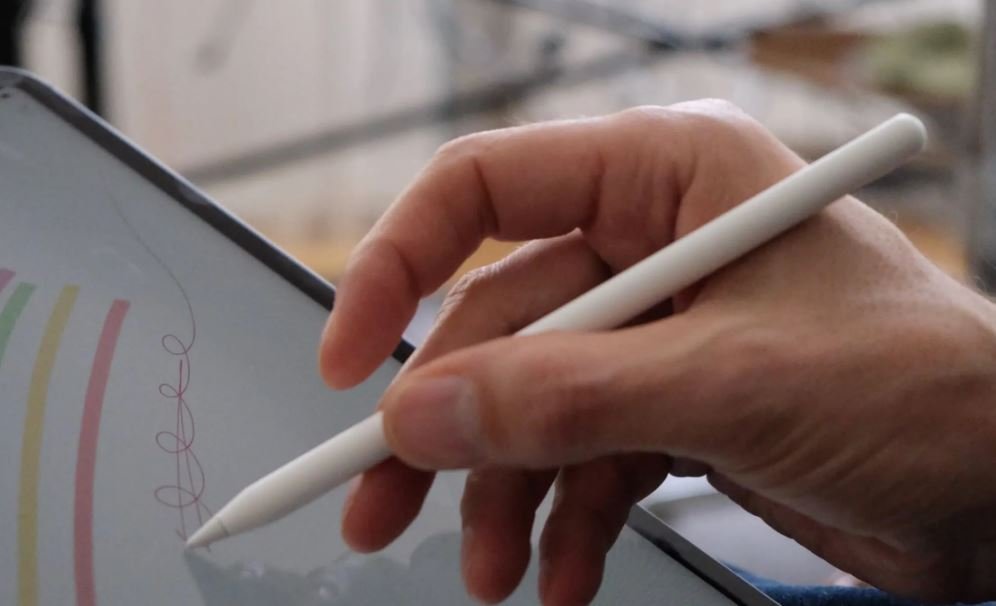Writing and taking notes is a daily activity for some people. Maybe you are a student or entrepreneur who likes to pen down ideas and quotes to motivate you for the day. Surely, you spend quality time in your closet capturing ideas and recording your thoughts. However, one of the best ways to save that super idea in your head is to use a note-taking app.
Note-taking apps have become popular nowadays. It doesn’t matter if you are always on the go. The inspiration can come anytime and you will need to make use of a note-taking app to write your ideas, business insights, motivation, and event reminders.
I’m a big fan of using note-taking apps. The way I see it, there are two reasons why you would want to use a note-taking app — one reason is because of its organizing ability, the other because of the great features and design.
I often like to write down my thoughts when I’m on the move or just want to remember something. I needed a way to quickly do this and turn my thoughts into words. I needed to choose apps for meeting notes, annotating PDFs, mind-mapping, and even choosing the best way to turn notes into images. Now you are going to find out about all the apps that can help you take your notes.
Perhaps, you are having writer’s block but if you want to pen down article ideas, then having a note-taking app will be handy. Those who are commuting or on the go use these apps to capture ideas on their mobile phones.

While some people are careful in the organization of their notes by making proper arrangements of bullets, headings, subheadings, and folders, there are others who save their notes anywhere they feel like. Although your smartphone may have its default note-taking app but there are better features in third-party apps that can boost your productivity.
Today, musicians and artists use note-taking apps to write their songs. No one carries their dairy around these days. If you are a poet or writer, you should have a note-taking app on your smartphone. In this way, you can spend more time creating and developing your ideas as they come and spend less time waiting for the inspiration to come.
If you are looking for an app to make a to-do list, shopping list, or create a reminder, we have some jotting apps that can help you simplify the process.
Without mincing words, we’ve created a guide that features the best jot-ready apps for all types of devices and operating systems. So, if you are searching for a note-taking tool or app to use, read this article to find the one that fits your style.
Best Note-Taking and Jot-Ready Apps In 2022
1. Evernote

Pricing: From free to $14.99/month.
Evernote is one of the commonly used note-taking apps today. This list will not be complete without Evernote being mentioned. It has apps on several platforms including iOS and Android as well as desktop apps for OS X and Windows.
There is an elephant on the Evernote. This platform is an “everything bucket”, which means that you can use it to capture, organize and save any kind of digital note with your smartphone, web browser, or desktop app.
You can access the Evernote writing interface through a web browser. Also, there are different browser extensions that you can use to capture lots of snippets of web pages for your notebooks. One of the best features of this tool is the Web Clipper extension, which makes you save webpages, including images, text, and PDF files with a single click. Several internet browsers including Safari, Chrome, and Firefox support the Evernote Web Clipper extension.
You can access your notes on the web, as well as on laptops and mobile devices. So, there will never be a situation where you will be stranded and unable to get what you have saved in your Evernote dashboard. This writing tool also helps you set reminders, present notes in PowerPoint format, and merge them together.
When I started creating content for blogs, magazines, and websites, one of the first writing apps I used was Evernote. At first, it seemed difficult for me to get used to the interface but with time, I got familiar with the process. This made me transfer all the notes and documents I had on my phone and PC to Evernote.
I was also scared of losing some of the notes I had written on paper, so I found a way to integrate them into my Evernote account. I added pictures, DOCX, and PDF documents and also stored photo notes, audio recordings, and voice notes in Evernote.
Doing this helped me in a great way as my workstation, office, phone, PC, and email weren’t cluttered with files. I organized my files and content in such a way that would help me find anything I want with ease.
Evernote has a powerful multimedia feature that allows you to share your images, articles, files, and content with others. It has both free and paid plans but the free plan has limited functionalities. The free plan has a limit of 60MB of new uploads every month with syncing limited to only two devices.
There are two paid plans, which are the Evernote Premium Plan for individual users and the Evernote Business plan for business. You can upgrade to a personal account for $7.99/month and upload 10GB every month with syncing across unlimited devices. The professional account, which costs $9.99 comes with team administrative features and collaborative options, and it allows you to upload 20GB each month.
One of the features of the Evernote Premium Plan is that it lets you integrate your work into Google Drive, Outlook, Microsoft Teams, Slack, and Salesforce. Moreover, it provides an AI to help you with content ideas and suggestions.
Pros
- Free to use.
- Good functionality.
- It allows you to store multimedia.
- Great tool for writers and bloggers.
- Save web pages for offline use.
- Excellent search and tagging.
- Helps you organize your files with ease.
- Compatible with Windows, Mac, iOS, Android, Chrome, Safari, Edge, and others.
Cons
- Slow on older devices.
- Doesn’t integrate with Microsoft Office.
2. Microsoft OneNote

Pricing: Free.
OneNote is a cross-platform note-taking app developed by the tech giant, Microsoft. This note-taking app comes with the Office 365 package and it integrates seamlessly with Outlook and other Microsoft Office apps such as Microsoft Powerpoint and Outlook.
Microsoft OneNote has an intuitive and easy-to-use interface that is aimed at entrepreneurs and business people. The major benefit of this Microsoft note-taking app is that it allows people on a group or team to share digital notes as well as collaborate and work with each other.
Furthermore, it enables you to sync all your data back to Microsoft OneDrive. With Microsoft OneNote, you can perform a lot of tasks including creating & saving digital notes, creating To-Do Lists, and keeping articles and written content with the OneNote web clipper. The web clipper feature is good but not as intuitive as Evernote.
If you use the iPad, you should be able to use OneNote since it is compatible with the Apple stylus. Additionally, OneNote works with Microsoft Office programs such as MS Word and Excel and it handles MS Office attachments better than any other note-taking app mentioned in this post.
Although Microsoft OneNote is free but it has paid options, which provide you with more features and functionality.
3. Google Keep

Pricing: Free.
Google Keep is a free, lightweight note-taking app that is great for those who want to capture their thoughts quickly. Once you have conceived a concept or an idea in your mind, this app allows you to save it before you forget.
Apart from being free to use, Google Keep has a colorful and intuitive interface and can be used across various Android devices. While other note-taking platforms focus on rich feature sets, Google Keep intends to provide a fairly simply cloud-based platform that allows several inputs such as photos, audios, test notes, and checklists.
Luckily for you, you can create notes and store them on your Google Drive to access them whenever you need them. Similar to Evernote, the Google Keep platform boast the image recognition feature, which allows you to convert photos and images of your notes and PDFs into searchable text. Cool, isn’t it?
People who keep digital notes are known to use tags to categorize and organize their notes to help them find them out later on. Sadly, Google Keep doesn’t support tags. However, it remains one of the best free note-taking apps.
Google Keep is the best jotting app for minimalists. If you work around Google’s ecosystem, you will surely need to use this app.
Pros
- Free to use.
- Intuitive, colorful interface.
- Supports image recognition.
- Can be used on any Android device.
Cons
- It doesn’t support tags.
- Not ideal for people with large note databases.
- Designed only for those who are using Android/Google services.
4. Simplenote

Pricing: Free
Over the years, Simplenote has become a favorite amongst many writers. This text-oriented note-taking app is great for people who want to capture and organize text notes. The unique selling point of this tool is to provide a simple user interface that makes tracking notes easy. It has apps for Android, iOS, Windows, and Mac.
Anyone can access Simplenote and save digital notes through a web app. Regrettably, Simplenote doesn’t store or keep web pages and clipping on its platform. It focuses on saving, formatting as well as sharing text notes without impeding the notes with excess media files.
Nonetheless, one of the exciting features of Simplenote is that it plays nicely with writing applications like Scrivener. Also, it plays well with Notational Velocity for OS X. Simplenote is a great writing application for anyone who wants to capture digital notes and article ideas on the go. If you are in a meeting or gathering, this platform can help you take notes quickly but will require internet access.
With Simplenote, you can categorize your note with the use of tags. These tags make it relatively easy for you to organize your notes and find them whenever you are in need of them.
Pros
- Popularly used.
- Free to use.
- Cross-platform.
- Recommended for writers.
- Minimalist, great design.
- Sync and backup across multiple devices.
Cons
- Only support text doesn’t provide support for multimedia.
- Can’t capture web pages.
5. Notion

Pricing: From free to $4/month.
The creators of this platform have designed this tool for creatives and writers to get their job done with ease. Notion prides itself as an all-in-one workstation for note-making, writing, collaboration, project management, and lots more. Notion can be your personal and team productivity workstation. It allows you to add images, bookmarks, toggle links, files, code snippets, text snippets, discussion sections, and more to your work.
It seeks to consolidate all the tools that creatives or writers may use as their preferred writing app, project management app, to-do lists, and others. It can be used as a writing app, document library, to-do list system, company wiki, Trello board, and much more. Some people have started selling digital products created with Notion.
Anyone collaborating with a group or team of people should consider using this app as their preferred note-taking app. Notion has all the tools and materials you will need to get the work done. It is highly customizable and also available on Android, iOS, Windows, and Apple Mac.
I am extremely shocked setting the set of powerful tools in this app. Don’t be overwhelmed. You can try out this app for free to see things for yourself before paying the subscription fee of $4 per month.
Pros
- Awesome interface.
- Contains necessary functionalities.
- Intuitive and user-friendly.
- A great alternative to Evernote.
Cons
- The high number of features may be a turn-off to some people.
- It comes with a learning curve.
- It takes some time to get used to the blocks.
6. Apple Notes
Pricing: Free.
The Apple Notes isn’t too different from SimpleNote. With this app, you can write notes and also manage basic-to-do lists quickly. If you are a fan or user of Apple products, you can consider using their note-taking platform. One of the reasons why you should use Notes is that it is already on your iPhone or iOS device. So, when you write down things, your notes are synced to all your iCloud devices.
At the time when Apple Notes and iCloud were newly launched, they used to have syncing issues. But today, things have changed as you can use both platforms without issues. Apple upgraded the app while updating the iOS and macOS.
Once you have created a new note, you can attach images, add text, add a checklist, scan documents, draw or handwrite, classify data into tablets, and lots more. For instance, if you click Scan Document, the camera will open on your iPhone or iPad and you should be able to automatically scan, process as well as add other documents such as PDFs, bank statements, receipts, and letters.
Furthermore, it helps you organize your files and attachments in folders and search for text. You can create a password to protect your notes or unlock them with TouchID. If you are working or collaborating with a team, there is a feature that allows you to share your Notes with people who can contribute or make changes from their Mac, iPad, or iPhone.
If you are using an iPad or iPad Pro, you may consider getting the Apple Pencil. The Apple Note is compatible with the Apple stylus. You get 5GB of storage across the entire iCloud services while the paid plan gives you 50GB of storage for $0.99/month.
Pros
- Suitable for Mac, iPad, and iPhone users.
- Syncs across all iOS devices.
Cons
- Not suitable for those using Windows computers and Android devices.
7. Roam Research

Pricing: $15 per month
Although Roam Research is a relatively new note-taking app in the tech space, it has a cult following on YouTube. It has a modest learning curve and you will need to have a huge database of notes to get great value from it.
Unlike other note-taking apps, Roam Research finds connections between ideas organically. prides itself as a “tool for networked thought”. This tool is popular and commonly used by techpreneurs and technocrats. Apart from those in the startup community. Roam Research is a note-taking app suited for academics and researchers.
It is only accessible on the Mac desktop app and a web browser. You can start using this tool every month for $15.
Pros
- It is ideal for building a large or personal database of notes.
- It is a unique note-taking app.
- Great for techies.
Cons
- The subscription fee costs a lot for a note-taking app.
- It has a modest learning curve.
8. Bear

Pricing: From $1.49/month or $14.99/year.
Bear happens to be one of the best alternatives to Evernote. In fact, lots of Evernote are migrating to Bear due to the functionalities in the app. Some people prefer using Bear over other writing apps due to its fast and lightweight nature.
Bear allows users to create notes and sync them across multiple iOS devices using iCloud. Bear is a powerful writing app that lets you jot down notes quickly, doodles, ideas, stories, prose, poetry, or even snippets of code.
Similar to Ulysses, Bear uses rich Markdown editing, which lets you insert URLs into documents without displaying the entire link address. The markup editor supports over 20 different programming languages. You can organize your notes with hashtags, which also allows for a subfolder style format. Bear comes with cross-note links as well as tag support for a quick search of files.
If you are looking for a great note-taking app to enhance your workflow and productivity, you should be looking at Bear. Annotation of PDFs, encryption and app lock, tag autocomplete, and light & dark themes are some of the new features on the app. You can access Bear’s awesome functionalities and features on any iOS device.
Also, this app features a web clipper for capturing online content. It costs $1.49 to use Bear a month or $14.99 annually. The pro subscription provides features such as extra editing tools, note syncing, and export options for different file types.
Pros
- Free to use but has a cheap paid version.
- A viable alternative to Evernote.
- Cheaper compared to other note-taking apps.
- Cross-link notes.
- Advanced Markup Editor.
- Supports Markdown.
Cons
- Supports iOS only.
- It doesn’t have as many features as Evernote.
- Doesn’t allow integrations with 3rd-party apps like Trello.
9. Ulysses

Pricing: $5 per month or $40/year.
Since its launch, Ulysses has grown to become one of the popular writing apps on Apple’s computing system. Ulysses functions as a note-taking and writing app. In fact, this app is more powerful and useful than Simplenote because it lets you convert your notes into blog posts, articles, and even book chapters.
With Ulysses, you can set writing goals for yourself and neatly arrange your notes into folders. In addition to that, it supports multimedia content. You can embed pictures inside your documents in the form of links rather than letting to display them in the body text. To view the embedded images, all you have to do is to double-click the links.
Ulysses is written and saved in the app’s proprietary Markdown style, and this allows for colorful use of headings. Also, it comes with a typewriter mode and lots of themes for you to use. It syncs to iCloud and Dropbox but it is only available on the Apple Mac. It uses iCloud to store and sync your documents, which can be exported to other formats such as eBooks, PDF, Word, and HTML.
Bear in mind that Ulysses is not like other note-taking apps. Ulysses offers you what won’t find on other note-taking apps. It is a writing, blogging, and publishing tool altogether. Using additional features comes with a price tag. You can start using Ulysses for $5 per month or $40 for 12 months.
10. Obsidian

Obsidian has some of the features that an ideal note-taking app should have. This tool provides an all-encompassing digital database for everything you need to do. The Obsidian sidebar gives you options to arrange your notes into folders and subfolders and interestingly, you can link them all together using internal hyperlinks.
Typing “[[” displays a dialog box that allows you to choose any other note to link to. So, you can easily reference notes that you have created before. For instance, you can make a list of all the journals and books you read all through last year and link them to those notes where you review them.
Furthermore, Obsidian has a steeper learning curve than most jotting apps out there. At the fundamental level, this app uses text files formatted in Markdown style, so things may get complicated really quickly. If you intend to use this app, you should be prepared to put in the work to customize it to suit your needs.
The Obsidian interface gives you total control over everything you want to do. Also, you can add as many notes as you want in the same tab or window. Obsidian is free for the most part and the premium subscription starts from $25.
Pros
- Steep learning curve.
- Great interface.
- It gives you total control to create anything you want.
Cons
- May be complicated to set it up.
11. Dropbox Paper

Launched in August 2016, Dropbox Paper was designed with a focus on collaboration. It allows teams to share their ideas with one another. They can also share attachments such as images, videos, and documents for their projects. This platform is compatible with Android, iOS, and Windows.
Moreover, it can be integrated with productivity apps such as Slack, Google Calendar, and surprisingly, the Spotify platform. The enterprise features and functionalities of the Dropbox paper make it an ideal note-taking app for businesses.
One of the new features of this note-taking app is that it allows you to create mobile folders on the go. It is free to use. Therefore, if you are looking for a free or budget note-taking app to use with your team or staff, you should have your eyes on this tool.
Pros
- Free to use.
- Allows collaborations.
- Integrates seamlessly with other productivity apps.
Cons
- It isn’t so simple to set up.
12. Atom

Atom is not like other note-taking apps; it is mainly used for coding but it has functionalities that are useful for editing text. Since it is built on common web standards, you can maneuver its CSS stylesheet to create any visual theme you have in mind.
Would you prefer to write in the Markdown system with a solarized color scheme? No problem! All you need to do is to download the Markdown Writer extension and make your selection from the numerous community-generated themes. It is also possible to make your work look like MS Word 2016 with a Smooth Typing Animation-style effect.
Despite these features, Atom doesn’t come close to what an ideal text editor looks like. It lacks certain features such as an automatic grammar checker, which is common in many note-taking apps. Regardless, it can be powerful when used by the right hands.
It allows collaborative editing, and that allows you to share files with your team. Hence, several people can edit the same file using different operating systems. One of the remarkable features of Atom is that it is a cross-platform editor. That means it is compatible with Windows, Linux, and even iOS devices.
Pros
- Cross-platform.
- Collaborative editing.
- Allow you to modify multiple files at once.
Cons
- Not a rich-text editor.
13. Otter

Sometimes, you know what to write upstairs but your fingers aren’t sharp enough to capture the entire details. Otter has the ability to help you change your audio to text. Whether you are in a meeting or you are recording your thoughts, this app gives you the option to convert that audio into words on your screen.
Even if you are recording your thoughts, Otter helps you transcribe the audio. The transcription happens in real-time and you can go back at any time to annotate your notes. You can search for transcribed text so this gives you the freedom to move anywhere in your recording and listen to the key parts of what you said.
Amazingly, Otter gives you over 600 minutes of free transcription every month. If your needs are bigger than that, you can opt for the $12.99/month subscription, which gives you about 6,000 minutes with features such as skip silence and playback speed.
The Otter app is compatible with both Android and iOS devices. This app gives you notes to mark up, view, and share with other people.
14. Agenda
Most of the important notes that you will ever be taking will be time-sensitive. Agenda helps you merge scheduling and note-taking feature, which helps you not to miss out on any vital information that should be included in the notes.
The interface overview tab gives you a view of your agenda for the day. The Agenda app allows you to browse timelines as well as to insert tags, links, and images to your notes. Moreover, you can add them to your calendar or connect them to reminders.
The downside of the Agenda app is that it is only available on iOS. It has a free and paid version; the free version has limited features while the paid version gives you premium features. Since it is a one-time payment, there are no annual or monthly subscription fees.
15. Zoho Notes

Pricing: Free.
Zoho Notes is an ideal note-taking app for people who like to write their ideas and thoughts on the go. If you are the type of person who thinks that each note should be separate and focus on a particular area, then this app is for you.
It has a good set of features and provides support for rich text, audio clips, photos, checklists, photos, and files. Zoho presents each note as a card for you to review – even on the go. Over time, this feature has proven to be a good one, particularly for people who are busy learning a new skill but still want to review key concepts in their notes.
Zoho has the ability to sync and backup on different devices. The multi-device syncing feature keeps your notes on every device you own. It is compatible with a lot of devices such as Apple Mac, Windows, iOS, and Android.
Pros
- Free to use.
- Works with several devices.
- Available on iOS and Android devices.
- Great for those who are always on the go.
Cons
- Some people may not be happy with the card feature.
16. Nebo

Nebo’s note-writing platform boasts several high-end features and justifies its position in this article. This app was designed with handwriting coupled with active stylus pens including the Samsung S Pen for Galaxy Note (now Galaxy S21 Ultra) and the Apple Pencil for iPad in mind.
At the time of creation, Nebo was exclusively designed to be used on the iPad but today, they have expanded to include other systems such as Android devices (that use active stylus peripherals) and Windows 10 (for those using the Surface Pen).
Using the MyScript Interactive Ink, Nebo parses your handwritten notes into text, which makes it helps you format your notes easily as well as additional extras like emphasis, mathematical notations, bullet points, underlining, and picture annotation.
You can write equations and calculate or export them to LaTeX style. You can also export into MS Office documents or text files, and search your notes to find anything you wrote carelessly. Overall, Nebo is an interesting and versatile note-taking tool to use. You can download the app for free, however, the in-app purchases that usually come with more features cost $7.99 for a full pack.
Pros
- Available on Android and iOS.
- Parses handwriting notes into text.
- A feature-rich platform for making notes.
Cons
- Additional features come with a price.
17. Day One
Pricing: $2.95/month.
Day One is a journaling app. It can help you capture your thoughts and ideas about random topics and organize them into journals. I use Day One for my iPad and it syncs across all my iOS devices – including Mac and iPhone.
At times, I tag images of my index cards coupled with the ones received from other note-taking apps and add them to Day One.
If you are searching for a free note-taking app to use, Day One may not be for you. However, it doesn’t cost much. With as low as $2.95 (billed annually), you can start using the Day One app to make notes and write down information on your iPhone or iPad.
Pros
- Great for iPad and iPhone users.
- Great tool for writers.
- It comes with ready-made templates for taking notes.
- Fun to use.
Cons
- Windows only.
18. Penultimate
Evernote’s Penultimate gives you the physical feel of taking handwritten notes. This scribbling and note-taking app comes with a Smart Drift feature that automatically shifts the page to make space for you to write on the screen.
It was specially created with handwriting in mind. It features an express inking engine and an interface that allows you to search for snippets of text. Penultimate organizes your notes in the correct order and also integrates seamlessly with Evernote. Although it is free for the most part, there are paid options – Premium ($7.99/month) and Plus ($3.99/month) that gives you a lot of awesome features including bigger uploads.
19. Noteshelf
Noteshelf is a great note-taking app for iOS devices. This app allows users to arrange their notes into virtual notebooks as well as provides multiple paper formats for them to write down their notes. With Noteshelf, you can mark up and print your notes or export them to Evernote, social media platforms and even on cloud storage services.
It provides support for virtual keyboards and handwriting through some active stylus pens. Furthermore, it comes with various tools for diagrams, recorded audio, highlighting, photos and annotations. This feature-rich note-taking app provides an expressive ink engine.
When compared with other note-taking apps, Noteshelf has a decent price. The premium price costs $9.99 but if you don’t want the advanced features on the premium subscription, stick to the free plan.
Pros
- Supports virtual keyboards.
- Take down notes in various paper formats.
Cons
- For iOS devices only.
20. Your Camera
Pricing: Free.
Up to this point, a lot of people still don’t know that their cameras can be used to capture and record notes and thoughts. Although the phone camera is not a note-taking app itself but it is handy for documenting and capturing information.
I vividly remember my days as a college student, I had no laptop so most of the time, I used my phone to document my notes and that of my coursemates. Before you take a picture, it is a good idea to hold your finger on the phone’s screen to increase the focus and visibility of what you capture. Doing this will help you take a photo that is not only clear but easy to read.
Most smartphones including iOS and Android are synced to the ground and this means that your photo (notes) are backed up and saved – just in case you need them when you lose, misplace, or change your phone.
If you take notes with your camera, then try using Day One app for iOS. This app allows you to use your camera as well as text notes to record and document your ideas and thoughts. Sadly, it doesn’t have an Android version yet.
Pros
- It is readily available when you need it.
- Remarkably fast.
- It is always with you and can be used on the go.
Cons
- It may not fit people who just want to write.
- Your gallery will be stuffed with a lot of notes.
21. Standard Notes
Standard Notes is a jotting app that focuses on security and encryption. Your notes are encrypted end-to-end with AES 256 encryption across your synced devices.
It also offers offline access as well as multiple device syncing, a basic tagging system, and passcode and fingerprint lock support. It is worthy to know that Standard Notes feature unlimited device syncing. The app can be used on iOS and Android phones.
If you get the Standard Notes Extended subscription, which costs $9.99/month, you get access to cloud storage support, Markdown code, spreadsheet support, expanded backups, and themes.
22. Pen, Paper, and Index Cards
Pricing: Free.
These tools are cheap and readily available for work. Although it’s not digital but is impossible to overwrite index cards or pen and paper when it comes to taking notes. With pen and paper, you don’t have to worry about remembering your passwords or insufficient battery charge.
Pen, paper, and index cards are portable and you can take them anywhere. Sadly, we live in a digital age and most people prefer using their smart devices compared to using index cards, pens, and paper.
Pros
- Cheap.
- It is portable.
- It doesn’t need a charger or battery to function.
Cons
- If the notebook goes missing, you’ve lost all your notes and information.
- Lacks search functionality.
23. Squid

Squid (formerly known as Papyrus) is one of the best note taking tools for handwritten notes. This app places more emphasis on diagrams, drawings, and handwritten notes. This is the first Android-exclusive note-taking app on this list so Android users now have a jotting app to call their own.
With the vector-based rendering feature, you can zoom out and in on your notes as well as your drawings without worrying about quality loss. Also, it supports active stylus and passive stylus. Squid allows you to import images into your notes and export them in different formats such as JPG, PNG, and even PDF files.
Moving on, you can sort out your notes into notebooks for easy organization and tracking. Squid has a paid subscription which gives you some cool features such as PDF import and annotation, varieties of paper styles, and multiple exports of notes to cloud services.
Pros
- Supports active and passive stylus.
- Export notes in different formats.
Cons
- Available on Android only.
24. Plain Text Files
Pricing: Free
Plain text apps are excellent for note-taking and are free to use. Whatever device you are using, you will probably find a plan text app for it. Plain text files work anywhere, so you should not have any issues about a database.
Unfortunately, plain text does not allow for multimedia or rich content, however that shouldn’t cause any issues for you since you will spend less time formatting your notes. Another downside of plain text is that you have to find out a way of managing all of your new notes. Some users use folders for easy arrangement and organization of their notes.
Pros
- It is free to use.
- It works everywhere.
Cons
- It doesn’t support multimedia content.
- Less practical for larger databases.
What is a note-taking app?
A note-taking app is a tool that you can use to jot down information on your device rather than writing it on a piece of paper. Note-taking apps are typically lightweight, they don’t consume a lot of space in your device and are always have on your fingertips each time you want to digitally record any data.
There are lots of note-taking apps on the internet. The best note-taking app simplifies the work for you, they help you sort out your notes and organize them for reference and easy access.
What Is The Best Free Note-Taking App?
Google Keep, Microsoft OneNote, and Evernote (the free version) can be considered the best free note-taking app. However, if you are using a Mac, iPad, or iPhone, Apple Notes is an excellent choice.
What Are The Best Note-Taking Apps for iPad?
Obviously, the best note-taking apps for the iPad. It supports multimedia content and is compatible with the Apple stylus. Another note-taking app you can use for your iPad is Simplenote.
What Is The Best Cross-Platform Note-Taking App?
Evernote is a great cross-platform note-taking app that you can use across different devices including Windows, Mac, iOS, and Android. It also syncs across these devices and operating systems quickly.

How To Choose The Best Note-Taking App
Before choosing a note-taking app to use, first of all, consider what your needs are and what features you will need. Do you like to add multimedia to your work or just prefer to make simple notes? Are you looking for an app that syncs across multiple devices? Do you need to integrate with other services and share your work with others?
There are free apps and there are paid ones. Whichever one you choose, make sure that it gives you the quality and experience you need. If you need something simple, free apps such as Simplenotes can do the job but if you are looking for advanced features, be ready to get a paid subscription.
Our selections were based on a plethora of variables such as simplicity, features, cloud functionality, team collaboration, aesthetics, syncing, cross-platform support, interface design, quality, and overall performance.
Other tools that you will need:
- Living Writer.
- Scrivener.
- Grammarly.
- ProWritingAid.
Conclusion
Whether you are taking notes in class or capturing ideas on the fly, there is a note-taking app to help you organize and stay productive with your mobile device.
With smartphones now in your hand everywhere you go, you can jot down your ideas, work tasks, reminders, motivations, inspiration, revelations, and to-do lists on your phone. You don’t expect to take a pen and paper with you at all times. These apps can help you achieve things that you wouldn’t do with a pen and plain paper.
The note-taking apps in our recommendations will help you get the job done. It all depends on your choice and personal preferences. Maybe you are not only looking for a standard note-taking app but one that syncs with all your productivity apps. Perhaps you are looking for an app with cross-platform functionality or you want a platform that will help you record your ideas quickly. Collectively, these apps will enhance your creativity and help you evolve as a writer.
As a writer and researcher, I have written hundreds of articles for magazines, newspapers, blogs, and online media. I have used several tools and services in managing my work, and I can confidently recommend them for you to try out.
























